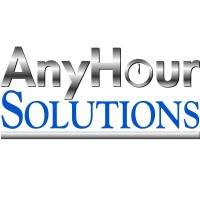Cost Savings of 24/7 Member Service Overflow/After Hours Support
Spring 2011 – AnyHour Solutions Newsletter

Contact center operations are a prime candidate for gaining efficiency via outsourcing, whether it be to provide supplemental 24/7/365 service or as a complete outsourcing solution. Small to medium size credit unions can realize the benefits of collaborative, contact center outsourcing options (i.e., – regular business hours overflow or evenings, weekends and holidays, or even 100% outsourced) benefiting from third party provider economies of scale normally enjoyed only by larger credit unions.
Fortunately, these third party providers are making themselves more attractive to prospective credit unions by:
- Offering flexibility in services and robust economies of scale;
- Locating themselves in outlying metro areas with plentiful workforce yet lower cost-of-living and passing resulting cost savings on to their clients.
- Investing in organic growth by training their employees in required skill sets;
- Eliminating credit union risk by offering full money-back guarantee of services;
- Offering a host of solutions that can be customized to meet the unique needs of any credit union – large or small;
The most obvious cost associated with every contact center is staffing: the MSRs’ salary and benefits. However, in-house call center operational expenditures can quickly skyrocket when all of the hard and soft costs are factored into the equation. Many credit unions do not consider these additional costs such as:
- Overhead – when you add typical overhead (insurance, furniture, training, payroll, legal, etc.) with hardware IT costs (servers, headsets, phones, etc.) and software expenses (PBx, ACD, IVR, call routing, CRM, scheduling, call analysis, call recording, etc.), it is safe to assume that they will add up to an industry average of 25% of the MSRs total salary plus benefits. These costs must be factored into your inhouse call-center expenses.
- Supervision – the cost of supervising is approximately equal to 11 percent of the MSR wage rate plus benefits.
- Occupancy is defined as the actual amount of time MSRs are taking member calls. Occupancy reduction factors include breaks, lunches, training sessions, coaching sessions, sick days, vacation time, and simply when an agent is available but not taking calls. Many CUs staff for peak times leaving MSRs potentially “underutilized” during non-peak hours. CU industry figures show that full time MSRs are actually engaged in member interactions on average only about 30 hours out of a 40 hour work week! This equates to an occupancy reduction of 25%. The CU of course has to pay the MSR for all this time whereas the outsourcer saves the CU money since the CU only pays when the outsource vendor takes a call.
- Attrition/turnover – as the attrition rate rises, operational costs increase dramatically because there are the “hard” costs of anywhere from $5,000 and $20,000 to put an agent to work (i.e., recruiting, hiring, and training), along with the “soft” costs from lost productivity, lost institutional knowledge, and lost business, which can dwarf the hard costs. A conservative industry estimate is to consider turnover costs to average 30% of an MSR’s wage plus benefits.
And there can be various other miscellaneous costs applicable to in-house call centers, for example the costs of having a third party company monitor and valuate/score agent calls. These third parties can also provide additional services such as one-on-one coaching sessions to maximize agent call quality.
The bottom line result is that most all credit unions can realize a savings – and typically a very significant savings – from outsourcing a portion of their all/contact center operation. In addition, utilizing a third party for overflow calls during the day can enhance service to your members by lowering call wait times, average talk times, and call abandon rates.
With so many variables to account for, it can be difficult for credit union managers to completely get a handle on their insourced contact center expenditures. That is why a company called AnyHour Solutions,who is a provider of 24/7 contact center services for credit unions, has produced a white paper that goes into this issue in more detail.
In addition, AnyHour Solutions has developed an easy to use spreadsheet that automatically calculates and totals these diverse expenses. This is a completely customizable tool designed so a credit union can simply input a few operational variables (i.e. # of FTE MSRs, MSR average hourly wage, and total number of monthly member service calls) and the model recalculates the cost comparison of in-sourcing vs. outsourcing. The credit union can change any of the variables/assumptions in the model and it will recalculate accordingly.
Read the Full AnyHour Solutions 2011 Spring Newsletter
For a free copy of this white paper entitled Cost Comparison of Insourcing vs Outsourcing Contact Center Operations and/or the cost analysis spreadsheet, email your request to Steven Holmes at: sholmes@anyhoursolutions.com; please include your name, title and CU name.




